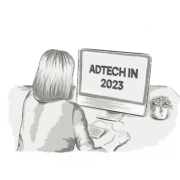When you hear the words “programmatic advertising”, what comes to mind?
Do you think about demand-side platforms (DSPs) and supply-side platforms (SSPs)? Or about real-time bidding (RTB) and private marketplaces (PMPs)?
Programmatic advertising is a broad term that spans many areas of digital advertising — from AdTech platforms and media-buying methods to advertising channels and mediums.
In this article we look at what programmatic advertising is, how it works, and the technology platforms and processes that power it.
What Is Programmatic Advertising?
Programmatic advertising is defined as the process of automating the purchase, sale, delivery, and measurement of digital advertising campaigns via advertising technology (AdTech) platforms. These AdTech platforms allow advertisers, publishers, and agencies to create, run, and optimize ad campaigns with minimal human involvement.
When online advertising first started, everything was a manual process; advertisers would send their ad tags to publishers, who would add them to their website.
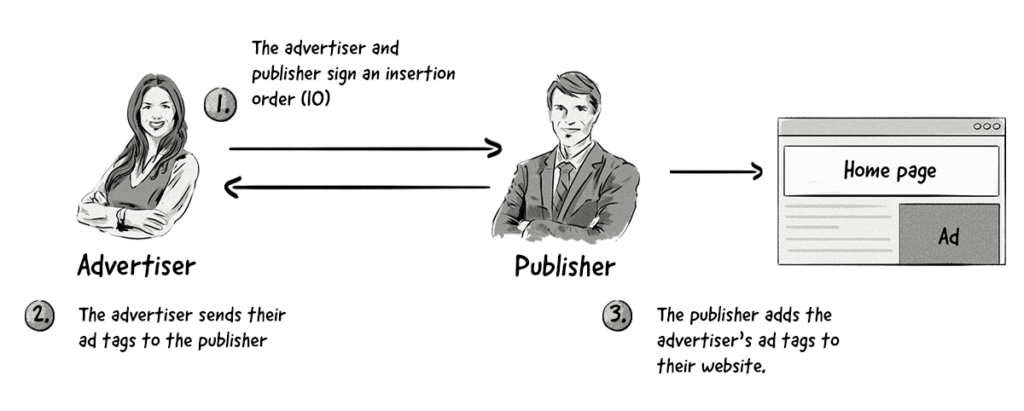
Compare that with how programmatic advertising looks when buying media via real-time bidding (RTB).

What Are the Main Programmatic Advertising Platforms?
In any given programmatic media transaction, there could be anywhere between a couple of AdTech platforms to a dozen.
Below are the main AdTech platforms involved in programmatic advertising campaigns.
Ad Servers
An ad server is a piece of advertising technology (AdTech) used by publishers, ad agencies, ad networks and advertisers to create, manage, and run digital advertising campaigns.
Ad servers decide which ads to display on a website, serve them, and display reports about metrics (e.g. impressions, clicks, and conversions) for advertisers and publishers.
Supply-Side Platforms (SSPs) and Ad Exchanges
A supply-side platform (SSP) is an advertising technology platform used by publishers to manage, sell, and optimize their inventory (aka ad space). SSPs enable publishers to monetize their website and mobile apps by showing ads in display, video, and native formats to their visitors.
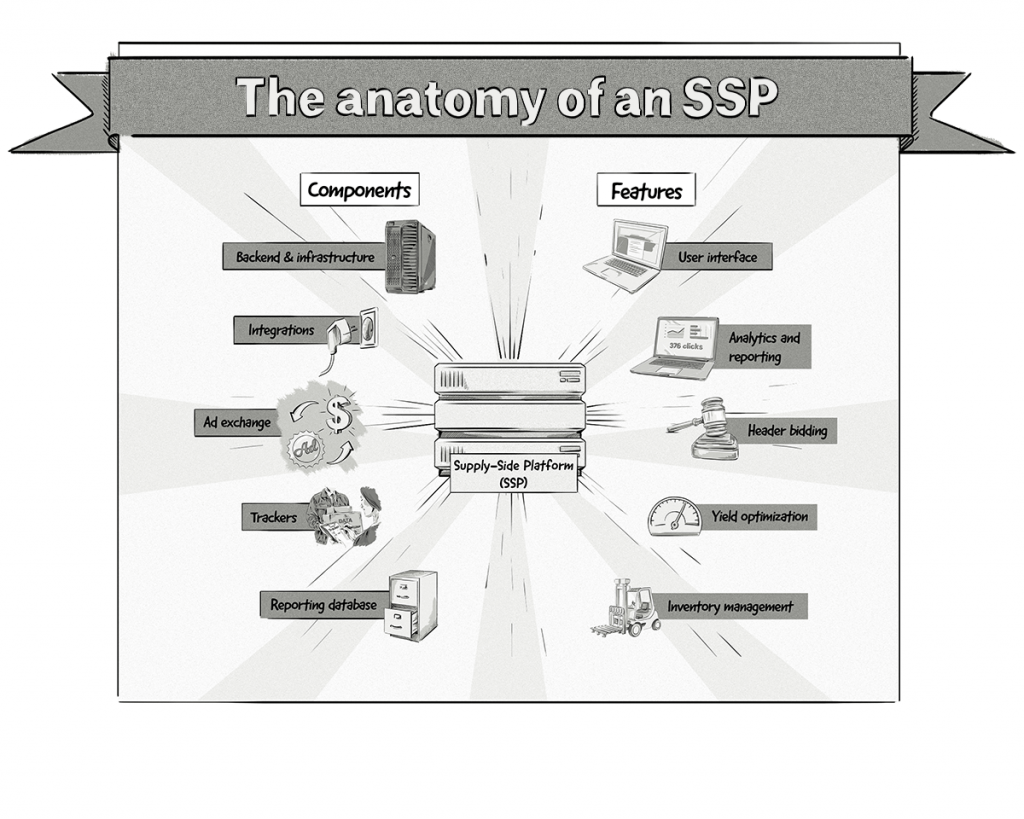
View the full infographic.
Over time, SSP vendors have added exchange capabilities to their platforms, allowing publishers to connect to DSPs directly instead of connecting to other ad exchanges first.
Demand-Side Platforms (DSPs)
A demand-side platform (DSP) is an advertising technology platform that allows advertisers and ad agencies to buy different types of inventory (aka ad space) from multiple publishers from a single user interface.
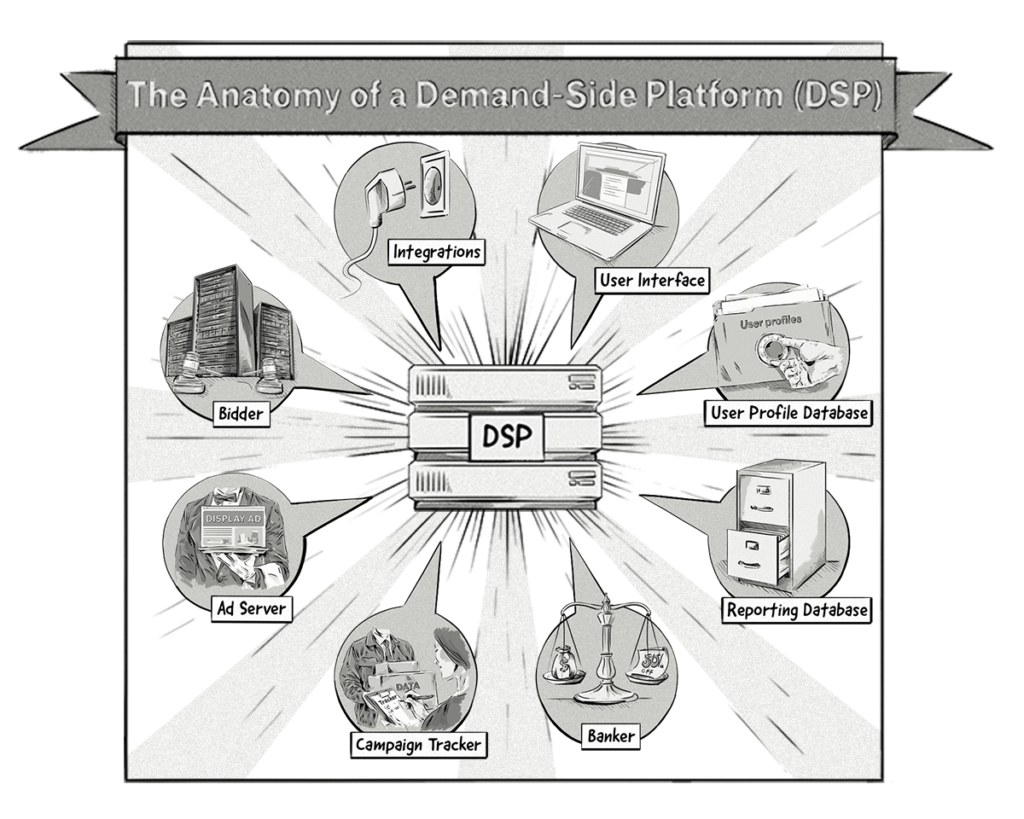
The main components of a demand-side platform (DSP).
View the full infographic.
DSPs, just like SSPs and ad exchanges, are a key part of real-time bidding (RTB).
Compared to ad networks that allow advertisers to buy inventory in bulk, DSPs can buy inventory on an impressions-by-impressions basis.
A DSP can be considered the stockbroker of programmatic advertising. Just like a stockbroker buys shares from a stock exchange on behalf of investors, a DSP buys inventory from an ad exchange on behalf of advertisers.
Ad Networks
An ad network is an intermediary between publishers and advertisers. The technology, like many other advertising technology platforms, emerged in the mid ‘90s. Ad networks have served the same function since the beginning, that is allowing advertisers to buy inventory from multiple publishers.
Ad networks traditionally aggregate unsold ad inventory from multiple publishers and offer it to advertisers at a discount compared to the publisher’s direct deals.

Although ad networks were introduced to sell non-premium or remnant inventory, it is becoming increasingly common for ad networks to buy exclusive inventory at more premium prices from publishers and sell it to advertisers at premium prices.
Data Management Platforms (DMPs)
A data management platform (DMP) collects, stores, and organizes data gathered from a range of sources such as websites, mobile apps, and advertising campaigns. Because DMPs collect huge amounts of data from a range of sources, advertisers and agencies use them to improve ad targeting, create advanced analytics reports, and conduct look-alive modeling.

View the full infographic.
Publishers can also use a DMP to view detailed reports about their audience and inventory, sell their data to advertisers and data brokers, and offer their audiences to advertisers outside of their website via audience extension.
How Does Programmatic Ad Buying Work?
The mechanics of programmatic ad buying can be divided into four main parts: Ad targeting, media buying, tracking and measurement, and reporting.
Ad Targeting Methods
Below are the main targeting methods advertisers can use to display their ads to users:
Contextual targeting allows advertisers to display relevant ads based on the website’s content.
Behavioral targeting, also known as online behavioral advertising (OBA), allows advertisers to display relevant ads to users based on their interests and web-browsing behavior.
Retargeting displays ads to online visitors who have interacted with the brand or advertiser in the past.
Demographic targeting allows advertisers to display ads to users based on demographic information like their age and gender. It is one of the most powerful forms of targeting and is often used with other methods to refine the targeting criteria. However, as most publishers don’t ask nor collect this type of information from their visitors, except from Facebook and Google, it’s not as popular as the other targeting methods.
AdTech & Programmatic Platform Development
We can help you design and build real-time bidding, and programmatic advertising platforms for all advertising channels — display and native, in-app mobile, video and audio, OTT and CTV, in-game and DOOH.
Programmatic Media-Buying Methods
There are a few ways advertisers can purchase inventory from publishers. These are: programmatic direct, real-time bidding (RTB), and private marketplace (PMP).
Often included in this mix are header bidding and a publisher’s waterfall, which aren’t really media-buying methods but ways to organize the above methods.
Programmatic direct, also known as programmatic guaranteed, programmatic reserved, or automated guaranteed, involves advertisers buying inventory directly from publishers via ad servers and ad networks. Programmatic direct deals can include guaranteed and non-guaranteed contracts.

With programmatic direct, an advertiser and publisher establish the amount of inventory and the CPM, and the rest of the process is handled programmatically via AdTech platforms.
There’s a lack of consensus in AdTech about what constitutes programmatic direct.
Some folks feel that it’s different than programmatic guaranteed, while others believe it’s the same thing.
Real-time bidding (RTB) was introduced in the late 2000s and was a game changer for online advertising.
RTB was originally designed to help publishers sell their remnant inventory to advertisers, but it’s now used to sell all types of inventory, including premium inventory.
One of the key differences between RTB and programmatic direct is that RTB transacts media deals via a real-time auction. Also, advertisers buy inventory on an impressions-by-impressions basis.
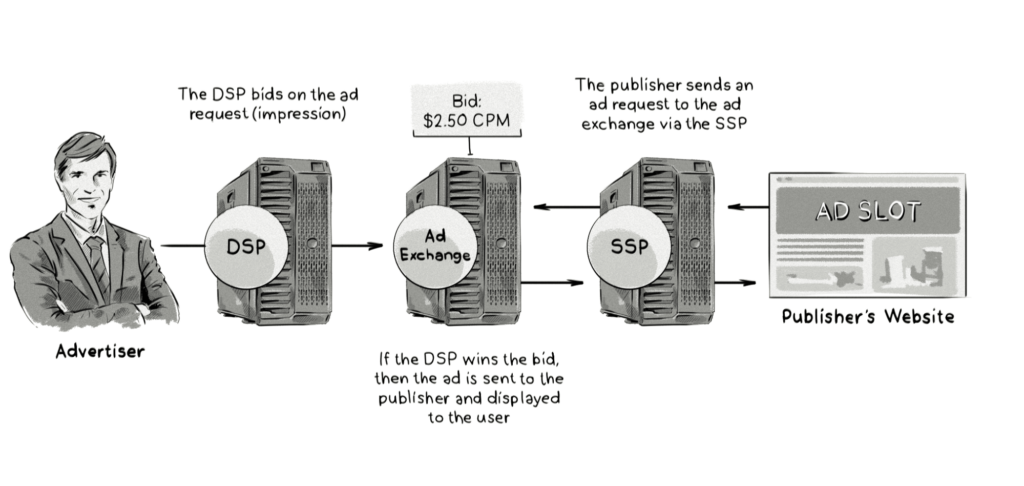
One main advantage of RTB is that advertisers can purchase impressions from multiple publishers together instead of dealing with them individually. As a result, advertisers can reach their target audience more precisely and bid accordingly based on what they know about the website and user at that particular time.
Private marketplace (PMP) is a variation of the RTB model which allows publishers to offer their premium inventory to a selected number of buyers. Unlike RTB where advertisers can buy a publisher’s inventory in an open auction, PMP is invite only.
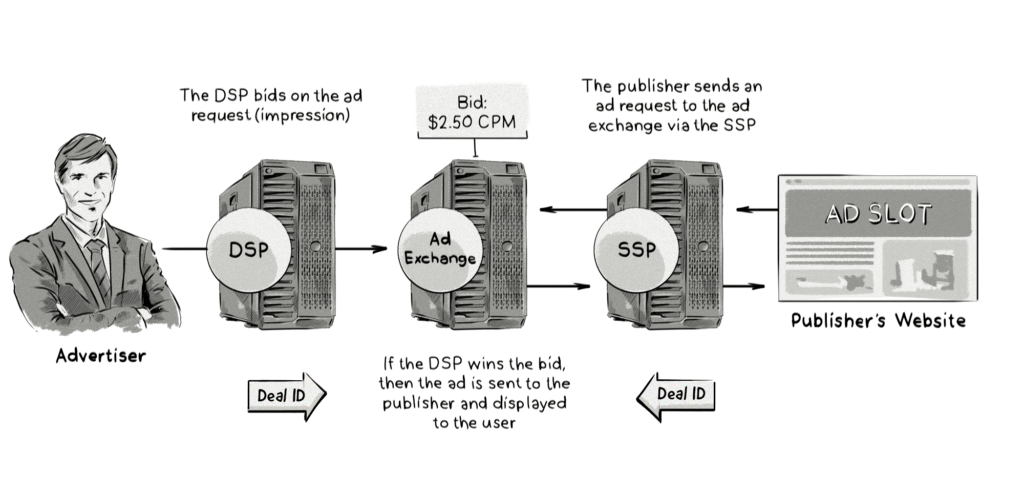
Advertisers interested in a publisher’s premium inventory can reserve, or guarantee, their ads before the publisher offers them in an open RTB auction.
The key element of PMP deals is a deal ID, which advertisers use to identify PMP deals in bid requests from SSPs and ad exchanges.
Waterfalling, also known also as a daisy chain or waterfall tags, is a process for selling inventory in which demand sources are initiated one at a time and one after another.
The goal of waterfalling is to sell all available inventory for the highest price.
Publishers set up a waterfall in their ad server, starting with the demand source that will likely produce the highest CPMs down to the lowest.
Here’s an example of a waterfall setup:

Header bidding (aka pre-bidding, advance bidding, and holistic yield management) enables publishers to simultaneously collect bids from a number of demand sources (e.g. DSPs) before their ad server loads other tags, such as direct deals.
Header bidding appeared because of the inefficiencies of waterfalling and Google’s preferences towards its own ad products. As many publishers use Google’s ad server, formerly known as DoubleClick for Publishers (DFP), Google favors bids from the Google ad exchange (AdX).
There are two forms of header bidding — client-side header bidding (CSHB) and server-side header bidding (SSHB).
With client-side header bidding, bids are sent from a piece of JavaScript code located in a website’s header section, hence the name header bidding.
Server-side header bidding is similar, except instead of multiple bids being set out from the browser, one bid is sent to a server which then sends it out to multiple demand sources.
Here’s an overview of how header bidding works:
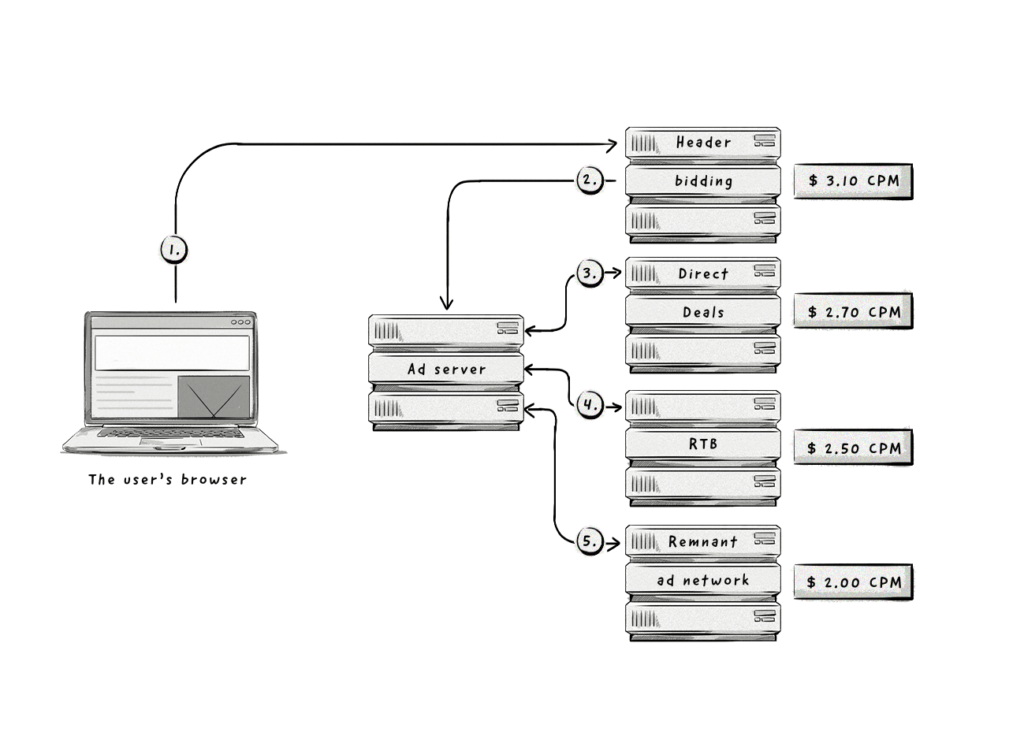
Header bidding allows publishers to obtain bids before their direct deals are loaded in their ad server.
Because publishers can collect bids from multiple demand sources before their ad server is called, it allows them to secure higher CPMs. Advertisers also benefit as they’re able to purchase inventory that they otherwise might have missed out on.
What’s the Difference Between Programmatic and RTB?
Programmatic media buying is an umbrella term for the automated process of purchasing digital ad space such as display, ads, banners, video with the help of software and algorithms.
Real-time bidding (RTB) is an example of a programmatic media-buying process, of which there are many.
The term programmatic implies that the process is automated.
Tracking and Measurement
Impression tracking measures the number of impressions each ad receives. Each time an ad is displayed to a user is considered an impression.
For example, if a user visits a web page and sees an ad, and then reloads the page and sees the exact same ad again, it counts as two impressions.
The most popular method of counting an impression is to serve a 1×1 transparent image which notifies the ad server of an impression. It’s called an impression tracker (or impression pixel).
Click tracking counts the number of clicks an ad receives.
A click tracker is the URL of the ad server’s redirect service which counts the click and redirects the visitor to the final landing page of the campaign.
The ad server returns the click tracker in the ad markup in order to count the click before the visitor is redirected to the final landing page.
A conversion is recorded every time a user completes a goal set up by an advertiser or marketer.
A goal is registered when a user completes a certain action, such purchasing a product, downloading a file, or filling in a contact form on a landing page.
Conversion tracking is used to report on a campaign’s performance and is used with the cost-per action (CPA) model, whereby publishers and affiliate marketers receive payment after a conversion has been reported.
Reporting
The reporting function in an AdTech platform displays metrics about various areas of a campaign.
These reports provide advertisers and publishers with highly valuable insights into the performance of their campaigns, such as how many impressions an ad received and how many users clicked on it.
A metric represents a number associated with the performance of a campaign.
Examples of metrics include:
- Impressions
- Clicks
- Conversions — the number of desired actions (goals) completed by a user (e.g. filling in a contact form or making a purchase).
- Reach — the number of unique visitors/devices that the campaign reached.
- Click-through rate (CTR) = number of clicks / number of impressions x 100.
- Cost per mille (CPM) = cost per 1,000 impressions.
- Cost per click (CPC) = the cost of each click an ad or link generates.
- Cost per action/acquisition (CPA) = the cost of each action, acquisition, or conversion. CPA is often used in affiliate marketing.
- Conversion rate (CVR) = the number of conversions divided by the number of clicks (then multiplied by 100 to get a percentage). This model is typically used for click-through conversions.
- Amount spent (cost) = the amount of money spent for the respective impressions, clicks, and conversions.
- Revenue (total conversion value) = the amount of money earned from the conversions.
In most reports, you’ll see metrics that have the letter e before them.
The e stands for effective and is used to determine the revenue generated by a particular pricing model (e.g. eCPM).
Effective CPM, CPC, CPA can be calculated for any campaign and can be worked out by using the following formulas:
Effective cost per click (eCPC) = budget spend / number of clicks
Effective cost per action/acquisition (eCPA) = budget spend / number of conversions
Effective cost per mille (eCPM) = budget spend / number of impressions x 1000
Let’s imagine an advertisers creates a campaign using the CPM pricing model. They could look at the eCPC and eCPA to see whether those pricing models would have delivered better performance (i.e. better results with less budget spent).
To measure the advertising performance, advertisers will look at the return on investment (ROI), which is calculated in the following way:
ROI = (total conversion value – amount spent) / amount spent x 100%
So if you spent $50 on an ad campaign (amount spent) and it made you $100 in sales (total conversion value), then the ROI would be 100%.
The ROI metric has either positive or negative value depending on the advertiser making or losing money.
Dimensions & Subdimensions
A dimension is an attribute or variable of data used to break down a report.
Some examples of dimensions include:
- Country
- Device type
- Browser type
- Hour of the day
- Campaign
- Line item
- Creative
- Date, day of the week
- Publisher URL/domain
- OS and OS version
- Geolocation
Subdimensions (aka drill-downs) allow us to view data from a given dimension that’s broken down by another dimension (e.g. Country -> State -> City).
Filtering
Filtering (aka segmentation) allows you to restrict the data set that you are running the report on.
Common filters include:
- Date range
- Advertiser
- Insertion order
- Line item
- Ad
On top of that, you can typically apply an include/exclude filter for any value for any dimension, e.g.:
- Country=Poland OR Germany OR United Kingdom
- Device type=Tablet
- Day of week=Monday-Friday
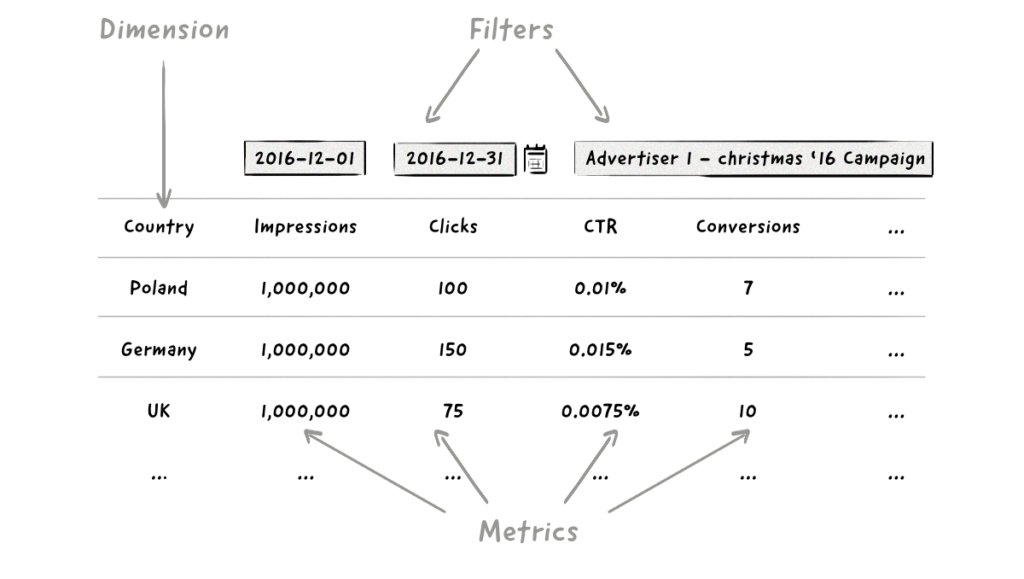
What Are the Main Mediums and Channels of Programmatic Advertising?
Advertising Mediums
Text and image ads
Text and image ads were the only medium available to advertisers in the late 1990s when online advertising began.

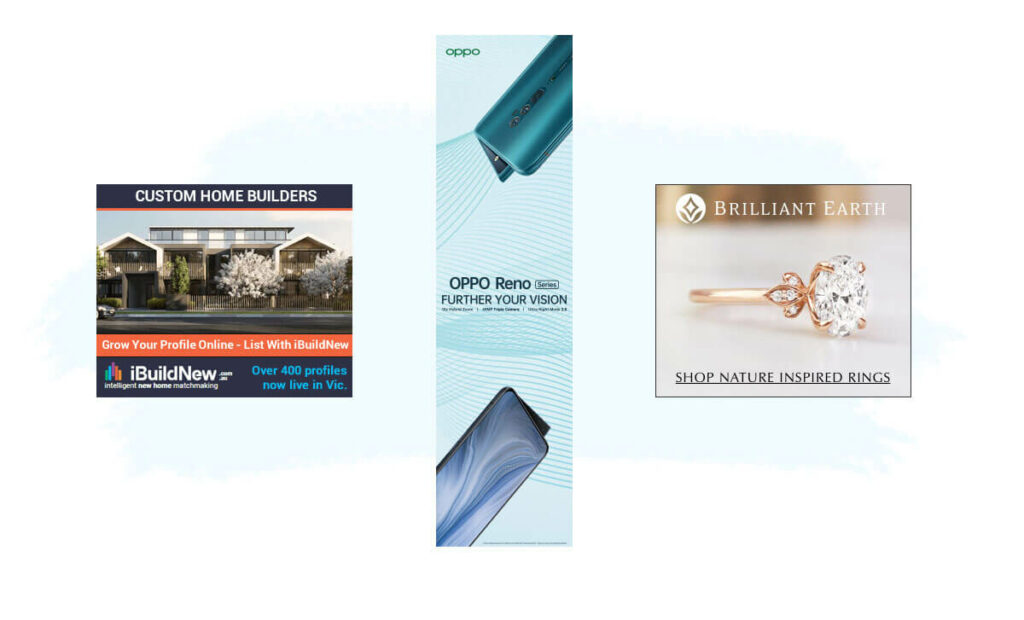
Despite the changes in technology and availability of new formats over the years, text and image ads are still the most popular media format for digital advertising.
Text and image ads are served and displayed via HTML, JavaScript, iframes, and SafeFrame tags.
Natives ads
The concept of native ads is to blend in with the page’s content to provide a natural form of the user experience.

Source: The Atlantic
Native ads are usually found on content-rich sites, such as news sites, blogs, and social media networks.
Some of the main native-ad formats from the IAB include:
- Recommended content, also known as recommendation widgets.
- Paid inclusion i.e. sponsored and advertorial content.
- In-ad with native elements.
- Custom.
Video Ads
Video advertising refers to ads displayed in the form of a video.
It is essential to not confuse video advertising with television advertising, as they are not the same thing, although online streaming services make it increasingly difficult to differentiate between the two.
Video ads are served similarly to an image, text, or native ad, except that the creative (i.e. the video) is sent and displayed in a video player rather than as a part of a website.
Rich Media Ads
Rich media is an interactive form of digital advertising that includes elements that allow the user to interact with the ad. Rich media ads include animated images such as gifs, audio files and videos.

Rich media ads appear in various formats, such as:
- Banners: standard text banners enriched with interactive elements.
- Expanding: ads that start off as normal banner ads, but expand after being clicked on by a user from right to left and the top to the bottom.
- Interstitials: rich media ads that float on top of the page’s content.
- Lightboxes: expand and often take over the whole screen especially when a user hovers over them for at least for 2 seconds or clicks on the ad.
Audio Ads
Because of the growing popularity of podcasts, music streaming services and digital radio, audio ads are becoming increasingly popular for brands and advertisers.
Audio ads, like other digital advertising mediums, appear in various formats:
Companion/banner ads usually appear on the screen while a user is listening to an audio track like a podcast or music, and as banner ads on web pages and mobile apps. These are essentially display ads (e.g. text and image ads) shown inside a music streaming app or something similar.
Ad pods are run in one or more audio files as pre-roll, before content, and mid-roll ads.
Dynamic ads are designed to change based on information known about the user, such as their location, the time of the day, and even the weather.
Advertising Channels
Web Advertising
Web advertising was the first channel available for advertisers and agencies in the late 1990s.
Web advertising consists of advertisements displayed in web browsers on desktops, laptops, and mobile devices such as smartphones and tablets.
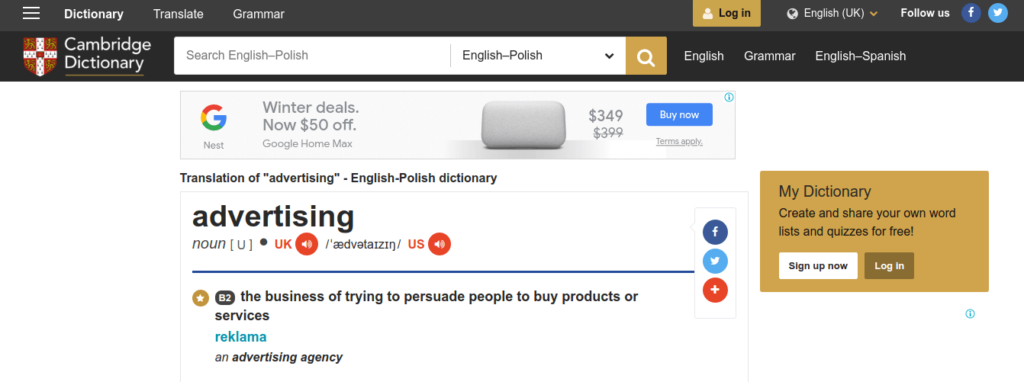
An example of a display ad in a web browser.
Displaying ads (e.g. text, image, and video ads) in web browsers involves adding a piece of HTML or JavaScript to a page. Then, when the browser loads the page, the ads load with it and send off requests to AdTech platforms to choose the right ad to show on the page.
Refer to the ‘How Does Programmatic Advertising Work’ section above to learn how this process works.
Mobile In-App Advertising
Mobile in-app advertising refers to ads displayed inside mobile apps on smartphones and tablets.
In contrast to web advertising that uses a browser to display ads, mobile apps need to use a software development kit (SDK) to display ads.
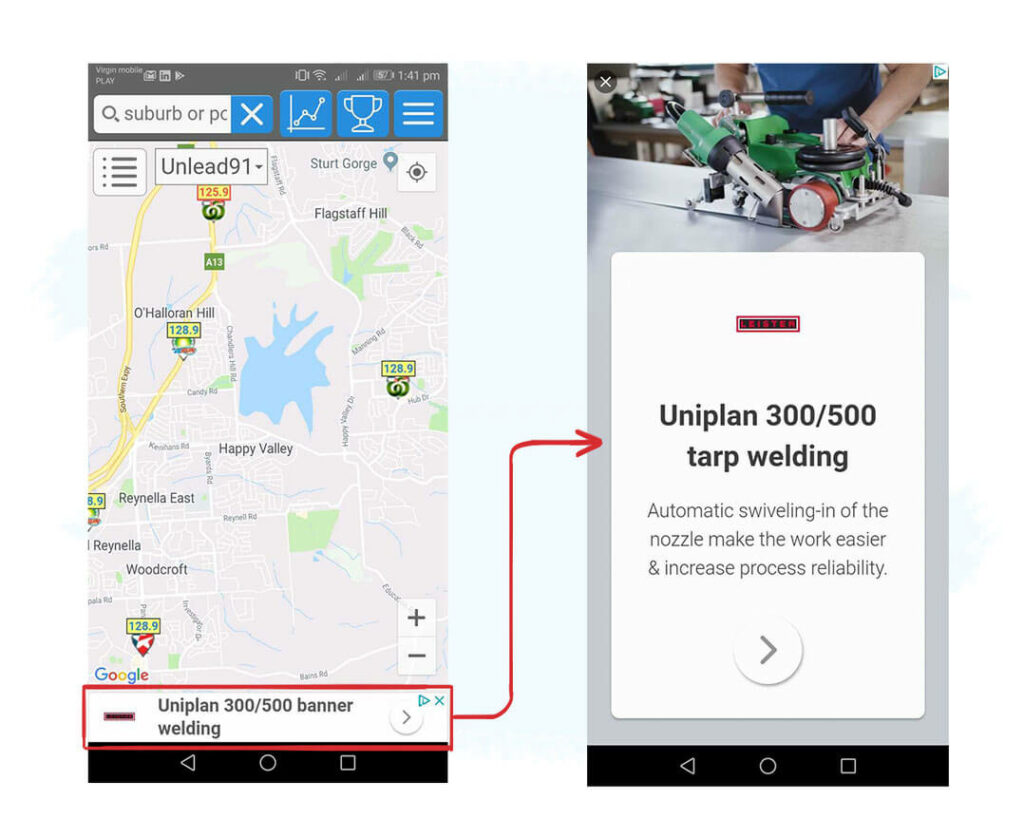
The mobile app’s developers integrate an AdTech vendor’s SDK into their app, define the ad space where the ads will run, and then select the ad medium (e.g. text, image, native, and video) and the ad format (e.g. interstitial and banner).
Social Media Advertising
Social media networks such as Facebook, LinkedIn, and Twitter are often included in the web advertising and mobile app advertising categories, even though they are their own advertising channel.
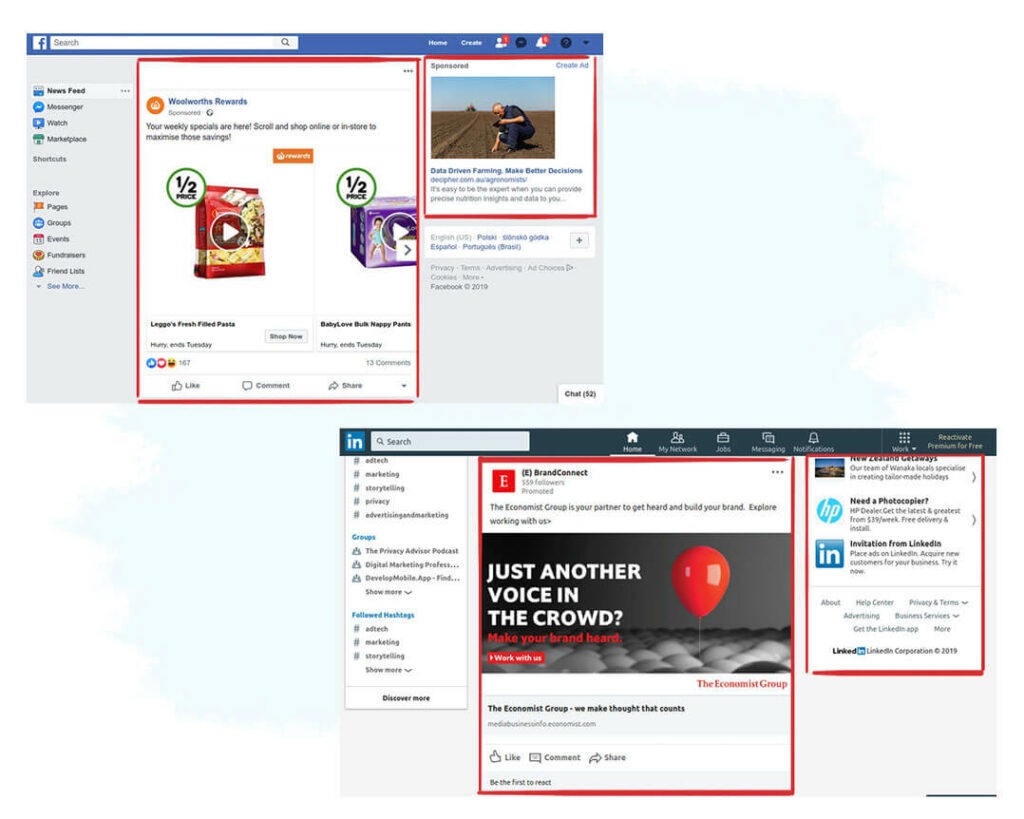
Popular social media sites such as Facebook, Twitter, Pinterest, Linkedin and Instagram utilize native advertising to resemble organic content.
Advanced TV Advertising (OTT, Connected TV, and Addressable TV)
Because of TV’s ability to reach a large audience, brands and agencies have relied on this medium to increase brand awareness and drive sales with engaging and often entertaining messages.
While traditional TV is still alive, new forms of TV are starting to emerge and bring new opportunities and benefits for brands and agencies.
New forms of TV include:
Advanced TV was introduced by the IAB and refers to any form of TV other than the traditional broadcast, cable, and satellite connections.
OTT: Over-the-top refers to devices or services used to stream digital content to a TV or similar device.
Examples of OTT devices and services include:
- Streaming boxes (Apple TV, Amazon Fire TV, Android TV, Samsung Allshare Cast)
- HDMI sticks (Chromecast, Roku, Amazon Fire TV Stick)
- Smart TV (through in-TV apps like Netflix or HBO Go)
- Game consoles
- DVR set-top boxes
- Internet-enabled smart blu-ray/DVD players
Connected TV is any TV or over-the-top (OTT) device that connects to the Internet and allows users to watch video content such as TV shows and films.
Addressable TV aims to display different ads to different viewers during the same program. It can be achieved by using data collected via Internet Protocol TV (IPTV), which includes connected TVs, OTT devices and services, and set top boxes.
DOOH Advertising
Prior to the Internet, out-of-home (OOH) advertising was a popular medium used by brands and agencies to advertise on billboards, street furniture (e.g. bus stops, telephone boxes) taxis, buses, and subway walls.
Technological advancements in OOH displays (e.g. digital screens, the Internet, connectivity, and sensors) enabled digital out-of-home (DOOH) to emerge as a new advertising channel for brands and agencies, allowing them to reach a large audience in a new and engaging format.
Gaming
Gaming is an immature area of advertising and programmatic with huge potential.
The popularity of online gaming and esports provides vast advertising opportunities as there is a wide range of platforms that can be targeted, such as consoles, PCs, and mobile devices.
The most popular advertising formats found in games include:
Around game environment ads: similar to traditional banner ads found on desktop and mobile devices.
In-game ads: a subtle form of an ad that appears suddenly within a game resembling product placement in films but is free of interactive elements such as clickable buttons.
Search Advertising
Running a search for a product or service on search engines like Google and Bing delivers a mix of organic and sponsored results.
Search engines display sponsored ads when a user enters in keywords which match the keyword targeting criteria set up by advertisers.
For example, if a user searched for the term ‘The best hotels in Madrid’, then an advertiser targeting keywords ‘hotels in Madrid’ would likely have their ad displayed in the search results.

Search ads are very effective as they are based on the explicit intent of the user and displayed in a native ad format. These factors lead to higher click-through and conversion rates among search ads compared to banner ads.
Is Programmatic Advertising Effective?
In terms of delivering, measuring, targeting, and reporting on digital advertising campaigns, there’s no doubt that the automation provided by programmatic advertising beats the traditional methods hands down.
However, some folks in the digital advertising industry have questioned whether the mass collection of user data to power 1-to-1 targeting has helped or hindered the evolution, success, and popularity of programmatic advertising.
Examples of this include the installation of ad blockers, privacy laws, and strict privacy settings in web browsers to strengthen user privacy.
Also, many publishers and advertisers often voiced their concerns to AdTech companies about a lack of transparency into fees, and the accuracy of user data and reports.
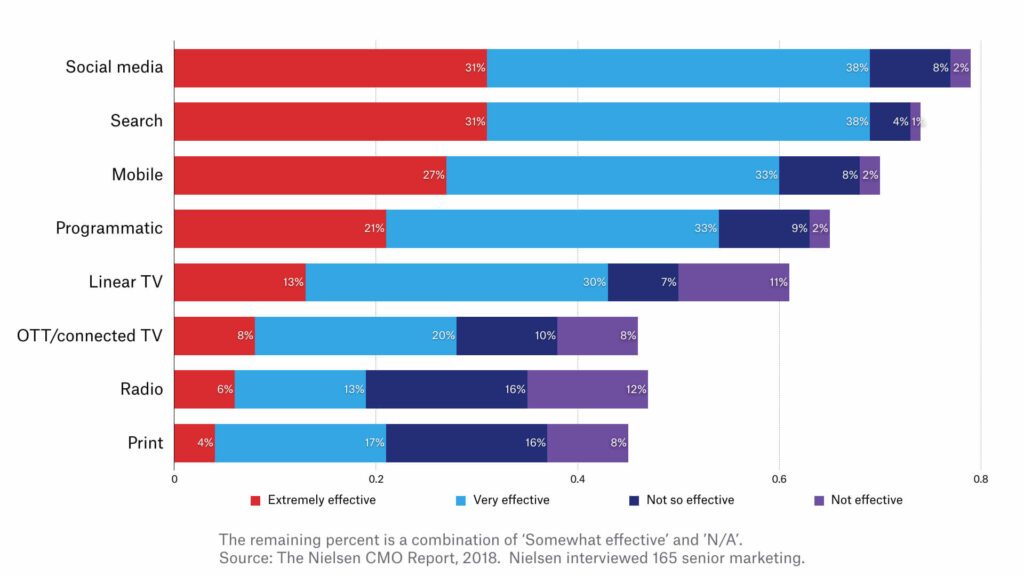
But despite the many challenges and issues within the programmatic advertising industry, it’s clear that the introduction of technology platforms has helped publishers monetize their websites and mobile apps, and advertisers reach their target audience on a larger scale.
AdTech & Programmatic Platform Development
We can help you design and build real-time bidding, and programmatic advertising platforms for all advertising channels — display and native, in-app mobile, video and audio, OTT and CTV, in-game and DOOH.


